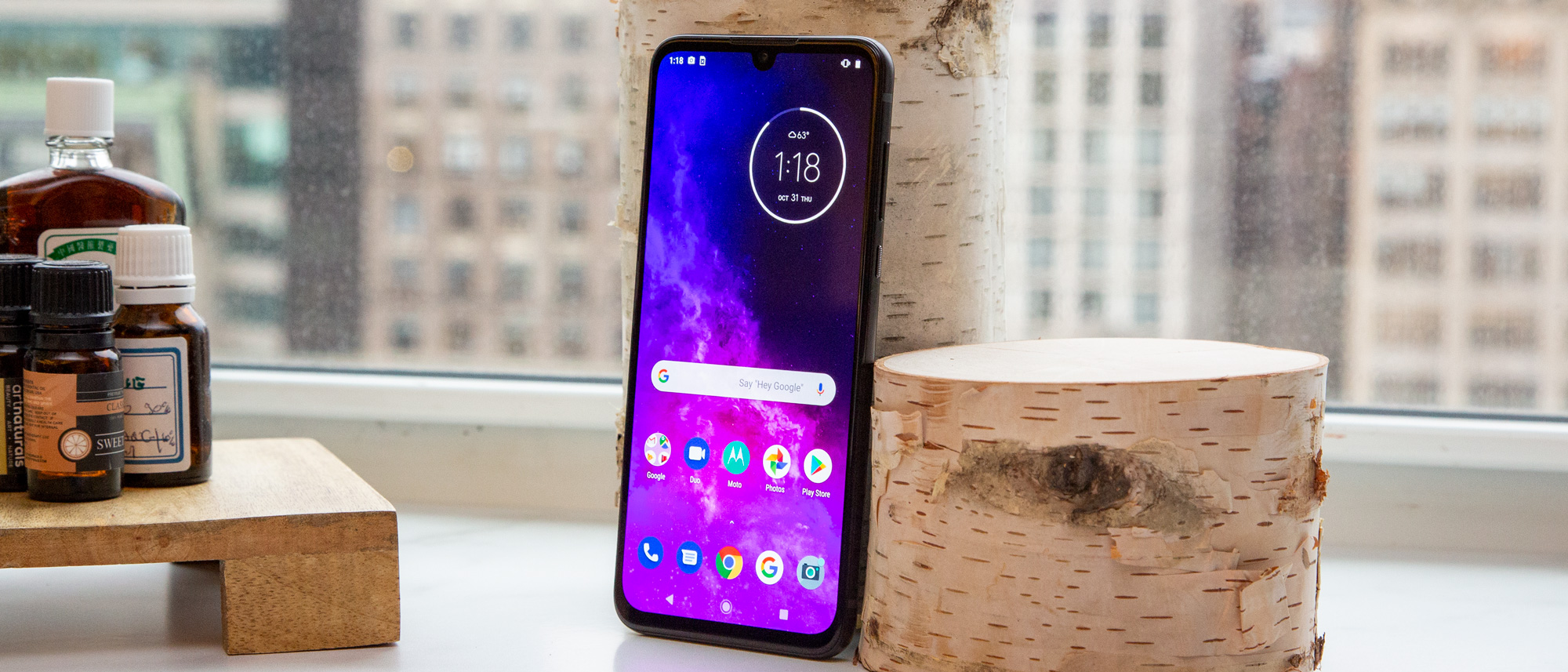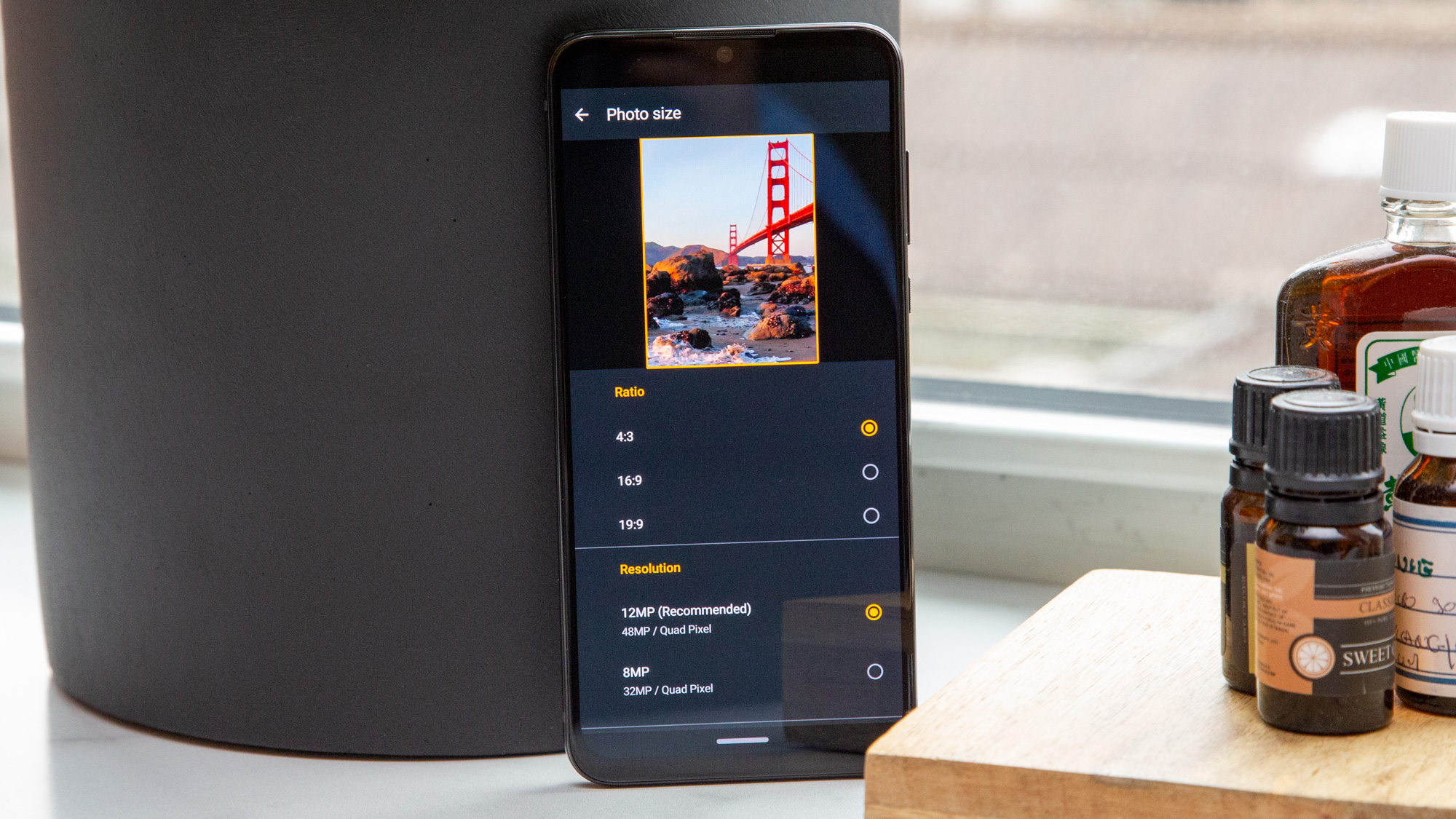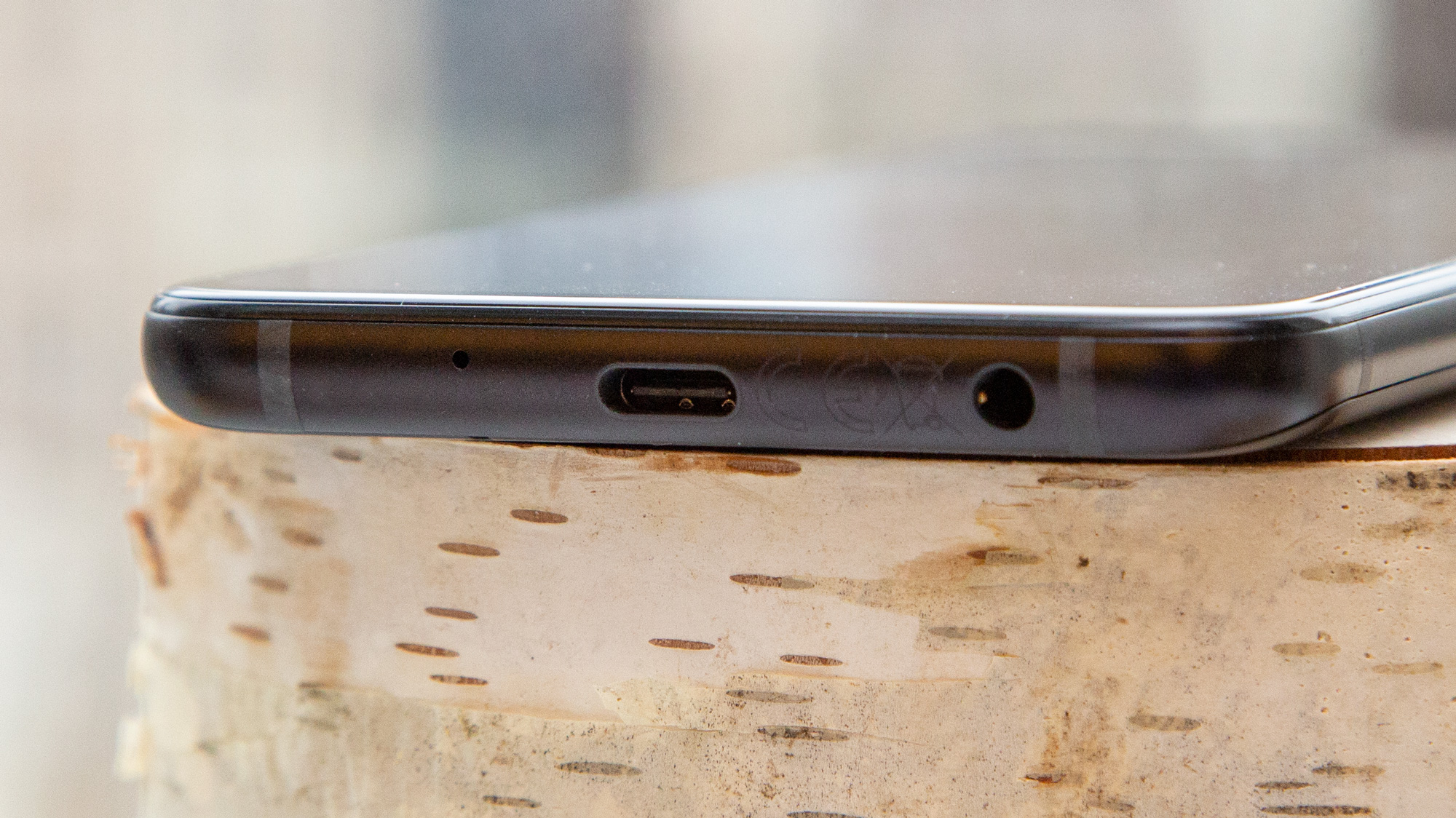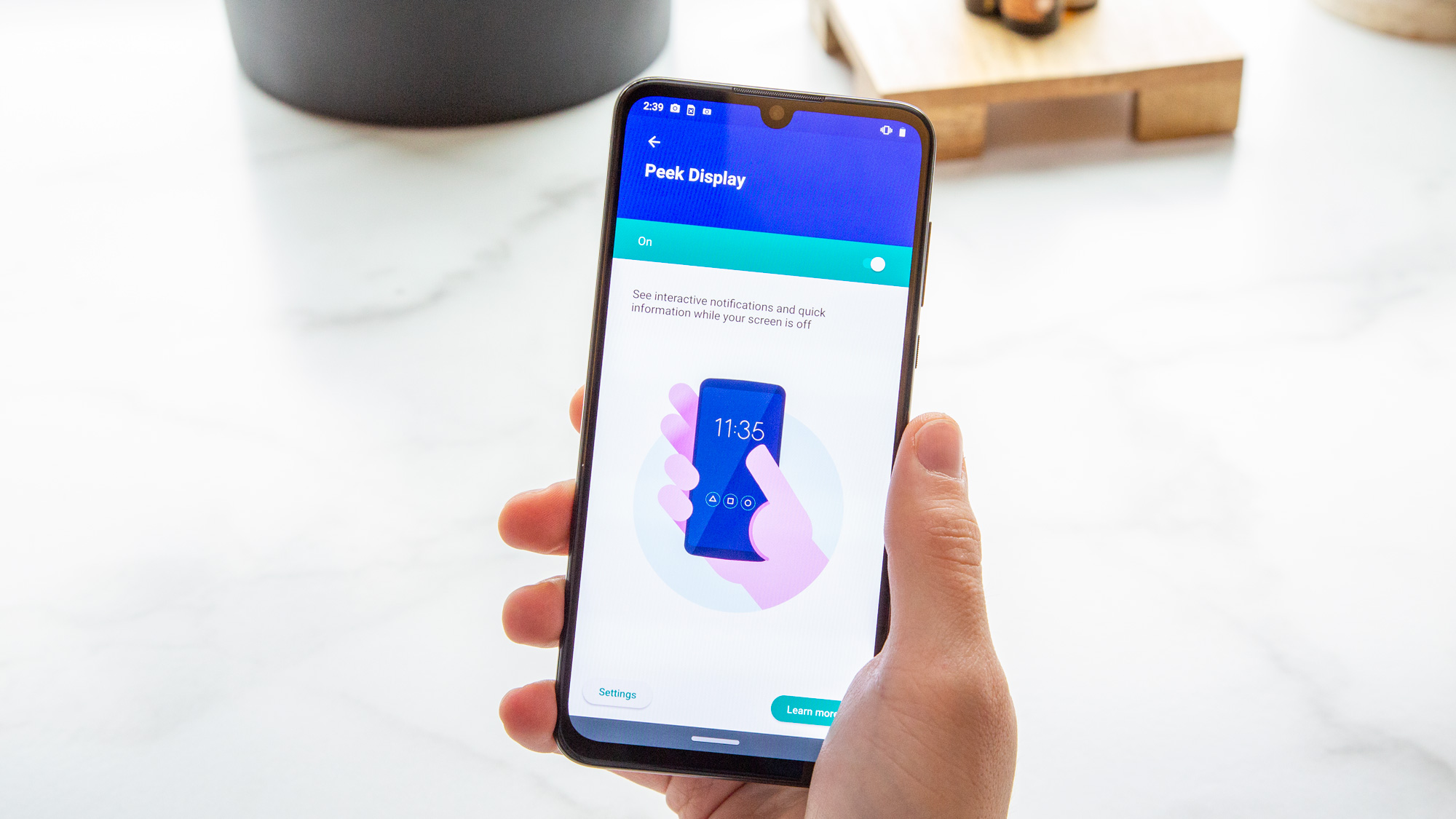Tom's Guide Verdict
The Motorola One Zoom offers better cameras than many similarly priced phones do, but this device's photography isn't quite as good as the Pixel 3a's, and its display, battery life and software are hardly class-leading for under $500, either.
Pros
- +
Decent performance
- +
128 GB of storage standard
- +
Versatile quad cameras
Cons
- -
Limited to GSM-based cellular networks
- -
OLED display isn't the best
- -
Software a step back
- -
Not the best camera in low light
Why you can trust Tom's Guide
"Midrange camera phone" sounds like an oxymoron, but with four lenses on the back and a monster, 48-megapixel sensor at the helm, that's exactly what the $449 Motorola One Zoom aims to be.
To some degree, Motorola's new phone succeeds. You'd have to spend hundreds more on a flagship from OnePlus or Samsung to get a phone with both ultrawide and telephoto shooters like the Motorola One Zoom has. However, the Zoom's versatility doesn't necessarily translate to great images in every scenario. The result is a decently well-rounded midrange contender, albeit one that doesn't quite find a home among the best camera phones or the best smartphones overall.
Motorola One Zoom price and availability
The Motorola One Zoom costs $449 and is sold unlocked from Motorola and Amazon. The phone works on only GSM-based carriers, like T-Mobile, AT&T, Metro and Cricket — meaning those who belong to CDMA networks, like Verizon and Sprint, are out of luck here.
There's only one configuration of the Motorola One Zoom, and it comes with 128GB of storage and 4GB of RAM. The device also accepts microSD cards up to 1TB in size, allowing you to store even more apps, games and media.
Motorola One Zoom specs
| Price | $449 |
| Screen size (resolution) | 6.39-inch OLED (2340 x 1080) |
| OS | Android 9 Pie; Android One outside U.S. |
| Processor | Qualcomm Snapdragon 675 |
| RAM | 4 GB |
| Storage | 128GB; expandable via microSD |
| Rear camera | Quad: 48-MP main (ƒ/1.7); 16-MP ultrawide; 8-MP telephoto with 3x optical zoom; 5-MP depth sensor |
| Front camera | 25 MP (ƒ/2) |
| Battery | 4,000 mAh |
| Size | 2.95 x 6.22 x 0.34 inches |
| Weight | 6.7 ounces |
| Color | Electric Gray, Cosmic Purple, Brushed Bronze |
Motorola One Zoom design
At a hair more than 6.2 inches tall and a little less than 3 inches wide, the Motorola One Zoom is more imposing than most midrange phones. In fact, it's easier to draw parallels in size with the 6.5-inch iPhone 11 Pro Max than with other devices in the One Zoom's price range.
The Motorola One Zoom is admittedly a bit easier to use one-handed than Apple's 6.22 x 3.06 x 0.32-inch iPhone, on account of the Zoom's slightly narrower frame. But make no mistake: The One Zoom is not ideal for those eyeing a more pocketable next phone.
This phone is also considerably flashier than most Motorola devices, with its massive, rectangular rear-camera bump and faux-brushed-metal back that actually consists of glass. The phone's quartet of lenses are housed above a Motorola batwing logo that illuminates while you use the device or when a notification rolls in. It's a clever idea for alerts, but the rest of the time, it looks sort of silly (though it does make me long for the return of notification lights).
Get instant access to breaking news, the hottest reviews, great deals and helpful tips.
The matte treatment on the rear glass does feel nice to the touch, though it also makes the One Zoom more slippery than a bar of soap. There are other quirks, too, like the lone speaker positioned on the top of the chassis, rather than the bottom or within the screen's bezels, as you'd typically expect.
MORE: The 10 best Android phones of 2019
If you can look past the huge quad-lens module, the One Zoom resembles your run-of-the-mill Android phone, with a rounded metal frame, a semi-awkward-looking teardrop notch in the center of the display and few discernible features when viewed head on. I wouldn't call it a particularly attractive piece of technology, but at least it's functional. Motorola has preserved the headphone jack on the One Zoom, and the phone's OLED display conceals an optical fingerprint scanner, which doesn't appear to be as finicky as similar sensors in other cheap phones we've come across.
Motorola One Zoom display
Subpar displays are rare in smartphones these days, and if you do happen upon a handset with a screen that isn't the best, the complaints typically relate to brightness.
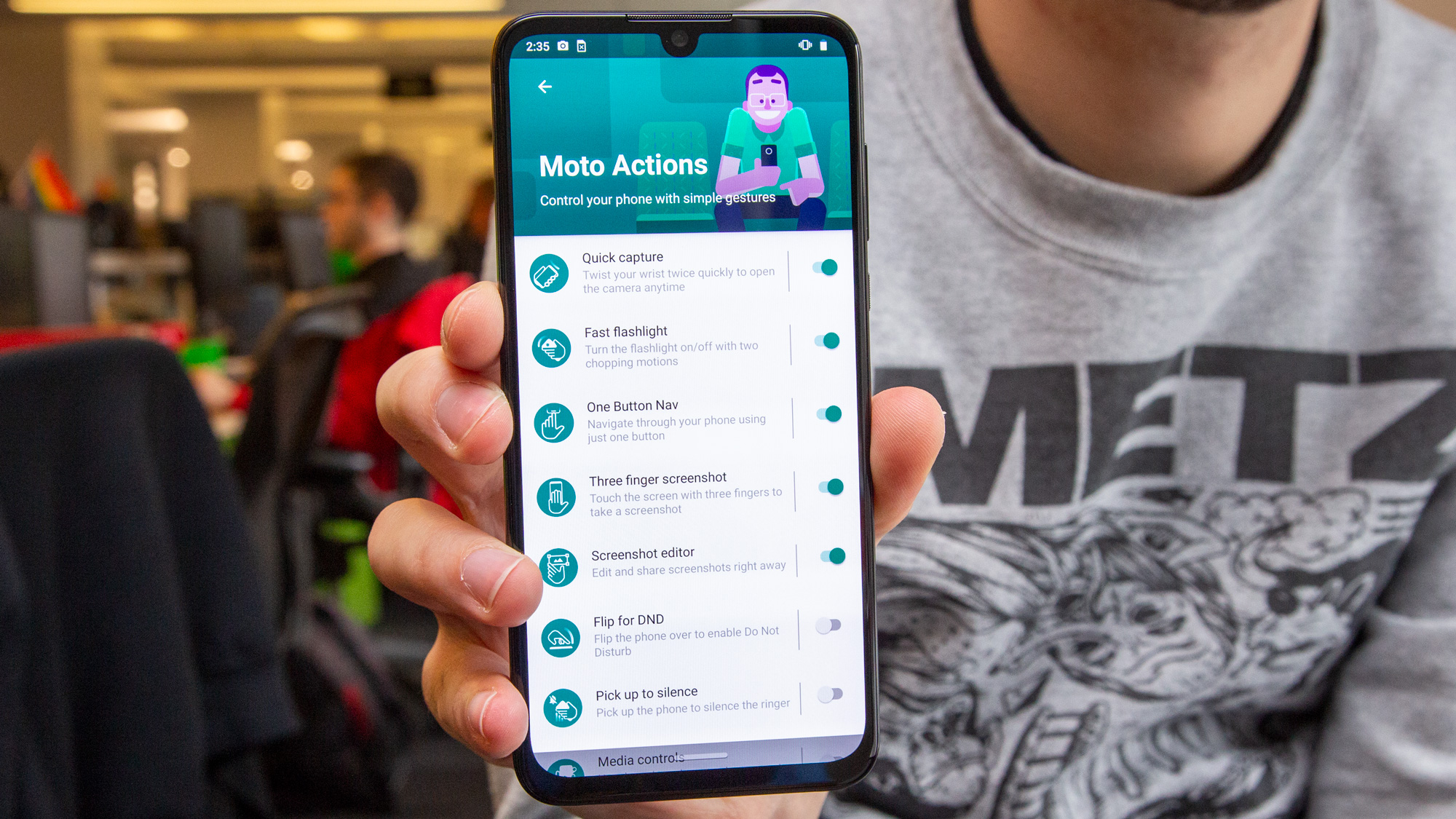
Indeed, the Motorola One Zoom's 6.4-inch OLED panel isn't the brightest out there, with a peak brightness of 403 nits. That's about even with the 401 nits on the Pixel 3a, which also happens to utilize an OLED screen, and the result is more or less consistent with what you see from other midrange devices. Sadly, if you want a really bright display, you still have to shell out around twice as much and get a flagship product.
But that's not my biggest gripe with the Motorola One Zoom's screen. Rather, my issue lies with the grainy, card stock-like appearance of solid colors, which we haven't observed on an OLED panel in quite some time. I didn't notice it right away, but once I did, it was impossible to unsee and strongly compromised the sharpness of text and on-screen graphics in general.
The Motorola One Zoom offers a selection of three color profiles: Natural, Boosted and Saturated. But a cool, bluish cast pervades all of them, making the screen look like it shares more with LCD panels than OLEDs. The Motorola One Zoom covers 208.7% of the sRGB color space but registered a Delta-E accuracy score of just 0.46 (numbers closer to zero are better), indicating overly vivid, unrealistic hues. The Pixel 3a, for comparison's sake, notched much stronger results of 182.3% and 0.18, respectively.
It's unfortunate that the Motorola One Zoom's screen is so middling across the board. OLED displays still aren't common in sub-$500 handsets, so the one in this device could have made it seem like a steal. Instead, the Motorola One Zoom stands a cruel reminder that not all OLED panels are created the same.
Motorola One Zoom cameras
The Motorola One Zoom's crown jewel is its 48-megapixel main camera. With an ƒ/1.7 aperture and the ability to meld four megapixels into one, this sensor is primed to deliver shots with increased light sensitivity in the dimmest conditions.
However, that's not the only camera on the back of this handset — far from it. Next door, you'll find a 16-MP ultrawide shooter with a 117-degree field of view, an 8-MP telephoto lens that supports a 3x optical zoom and a 5-MP depth sensor designed to ascertain more-precise bokeh when taking shallow-depth-of-field portraits.
The upshot of all these optics is perhaps the most versatile camera phone selling for under $500. The Pixel 3a still has the Motorola One Zoom licked in overall photo quality, but there are certain perspectives that the Pixel 3a cannot match, because Google's device is limited to one lens.
Take, for example, these portraits of my colleague Rami inside Tom's Guide's studio. Sure, the Pixel 3a's version is more traditional and technically better; there's more detail in Rami's face, the background has a satisfying blur to it, and the highlights and shadows are equally well lit. But I'm in awe of the Motorola One Zoom's more dramatic, pulled-back perspective, which really places the subject front and center, darkening the space around him. Wider-angle portraits really lend themselves well to this kind of vignetting, and the depth sensor appears to have helped here.
The Motorola One Zoom's Night Vision mode isn't quite as refined as Google's, adopting a ham-fisted approach to contrast and sharpening that results in an over-processed look. The bed of leaves is drained of color, while the tree trunks look almost as though they've been lifted from a splotchy watercolor painting. Given the Motorola One Zoom's relatively low price, we suspect that most customers would still prefer to have Night Vision as an option, faults and all. It's just far from the best implementation we've seen of such technology.
But then, the Pixel 3a has no answer to the Motorola One Zoom's ultrawide lens, which captured a semi-impressive shot of Bryant Park's iconic ice-skating rink beneath an autumn sky at dusk. As with many cheaper ultrawide phone cameras, there's a fair bit of distortion along the fringes in the One Zoom's photo, and the passersby nearest in the shot are rendered as murky, fast-moving smears. But the lighting is decent, and even if the Motorola One Zoom's ultrawide shooter can't compare to the iPhone 11's, it's not offensively off the mark for what you're paying.
Neither is Motorola's 3x telephoto lens, which will help you close in on objects off in the distance, though it adds some graininess. It's important to point out that while the Pixel 3a lacks optical zoom of its own, Google somewhat makes up for that shortcoming with the Super Res Zoom algorithm. Then again, while the Pixel 3a's rendition is unquestionably smoother than the Zoom's, it obscures finer details that Motorola's optics manage to catch.
Finally, there's the Motorola One Zoom's 25-MP front-facing camera, which also employs Quad Pixel technology to deliver lower-resolution (6-MP) images that are better optimized to let light in. While there's nothing objectionable about Motorola's work here, 6 megapixels may be a bit too limiting in this day and age, when most smartphone cameras capture selfies of at least 8 megapixels. Ultimately, I'm not dissatisfied with the results, though the Pixel 3a's rendition still edges ahead, with more-realistic coloring and highlights that aren't as blown out.
Motorola One Zoom performance
You won't find a flagship-caliber Snapdragon 855 processor inside the Motorola One Zoom. Rather, this phone makes do with Qualcomm's Snapdragon 675 system on chip and 4 GB of RAM.
Still, that's a strong combination for a midrange handset, and slightly more power than you get from the Pixel 3a, which utilizes slower, older Snapdragon 670 silicon. The Motorola One Zoom's speed advantage isn't significant, though it does ensure a fast and smooth user experience for practically everything except hardcore gaming.
Mind you, some titles will run choppier than others. PUBG Mobile is a stress-free experience on most phones, and the same is true on the Motorola One Zoom. In fact, I was impressed by the device's ability to handle the battle-royale shooter on its more taxing graphical settings. Even with anti-aliasing on and the frame rate set to high, the action remained mostly free of slowdowns. But then, I couldn't say the same for the much more demanding Asphalt 9: Legends.
MORE: The Best Android Racing Games
The Motorola One Zoom's multicore Geekbench 5 score of 1,600 bested the Pixel 3a's mark of 1,321. But the Zoom's result seriously pales in comparison to what you get from 855-powered devices, like the $499 ZTE Axon 10 Pro, which produced a score of 2,666. On the flip side, the Pixel 3a topped the Motorola One Zoom in 3DMasrk's Sling Shot Extreme OpenGL ES 3.1 graphics test by a pretty wide margin: 1,602 to 981.
Motorola One Zoom battery life
With such a large display, you'd hope the Motorola One Zoom would have a suitably large battery to match. And at 4,000 mAh, it's certainly no lightweight.
However, we had expected a bit more longevity than what we observed when we ran the phone through Tom's Guide's custom battery test. The Motorola One Zoom delivered 10 hours and 14 minutes of web surfing over T-Mobile's LTE network at 150 nits of screen brightness.
MORE: Best Phone Battery Life - Longest Lasting Smartphone Batteries
That's not only noticeably less than the Pixel 3a's time (11:59), but also below the showing from the iPhone 11 (11:16). In fact, the Motorola One Zoom lasted exactly as long as the 855-powered Axon 10 Pro.
Motorola One Zoom software
Paradoxically, the Motorola One Zoom doesn't actually run Android One software, at least not in the U.S.
That's more than a little confusing, so let's unpack exactly what the change means. Handsets included in Google's Android One program are committed to pure installations of Google's mobile OS, devoid of the extraneous front ends, graphics and apps that phone makers typically add in.
Some users prefer this stripped-down, lighter interpretation of Android, though the real benefit lies in how quickly and how often Android One devices are updated. Because Google vets the software, these phones tend to be among the first to receive major new releases of Android when they come out. While previous Motorola One devices ran Android One software, the latest from the company — like the Zoom here, as well as the Motorola One Action — notably lack it in the U.S.
It's not totally clear why Motorola decided this change was necessary, though it's hard to interpret it as anything other than a loss for its American customers. Without Android One onboard, the Motorola One Zoom is still relegated to Android 9 Pie, while awaiting an update to Android 10. There's a good chance it won't receive an update to Android 11 after that, because Motorola guarantees only one major upgrade for its cheaper phones. Long-term security patches are less certain as well.
MORE: Android 10 Review: An Update in Progress
One of the Pixel 3a's less talked-about advantages is that it offers buyers on a budget the kind of first-class Android experience typically extended only to flagship users. As a Pixel 3a owner, you can be certain you'll get three years of immediate updates to future iterations of Android, with all the latest and greatest features those updates afford, so long as your hardware can handle them.
Motorola One Zoom customers won't be able to say the same. Modern conveniences, like Google's new gesture-based navigation system and Night Theme, are still missing here. In fact, Motorola is still forcing users to go with its proprietary One-Button Nav scheme instead. One-Button Nav might've sufficed at a time when Android lacked gestures of its own, but today it's confounding to use, now that other phone makers have begun adopting Google's more streamlined approach.
Bottom line
The Motorola One Zoom is a valiant attempt at bringing flagship mobile-photography features down to a more affordable price. However, it's still not the best camera phone you can get for less than $500.
That title still belongs to Google's Pixel 3a and Pixel 3a XL and likely will until Motorola catches up to Google's computational photography prowess. The Motorola One Zoom touts a mess of high-resolution sensors and a plethora of optics, but the Pixel 3a shines because of software, not hardware.
That's not to say that it isn't fun to shoot with the Motorola One Zoom's ultrawide lens or that this phone isn't a better-than-average mobile camera for the money. It's just not the best. And in other respects, the Motorola One Zoom struggles to stand out, with a merely passable design, a disappointing screen, good but not especially notable performance and battery life that's serviceable but not that much better than the average.
Those looking for better photos would be wise to opt for the Pixel 3a, while anyone wishing for more power is advised to stretch their budget and land ZTE's Axon 10 Pro, or perhaps even the OnePlus 7T if they can part with $599. The Motorola One Zoom is an acceptable alternative to all of those devices, but it's also full of compromises you shouldn't have to make.
Adam Ismail is a staff writer at Jalopnik and previously worked on Tom's Guide covering smartphones, car tech and gaming. His love for all things mobile began with the original Motorola Droid; since then he’s owned a variety of Android and iOS-powered handsets, refusing to stay loyal to one platform. His work has also appeared on Digital Trends and GTPlanet. When he’s not fiddling with the latest devices, he’s at an indie pop show, recording a podcast or playing Sega Dreamcast.
